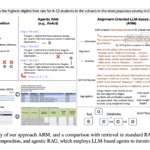President Donald Trump has given homebuilders some relief on tariffs — for now. Trump announced Monday that his administration is pausing tariffs on Mexico for a month after he and Mexican President Claudia Sheinbaum came to an agreement on issues related to border security.
In exchange for the pause, Mexico has agreed to immediately deploy 10,000 troops to the border for the purpose of curtailing illegal immigration and drug trafficking — particularly the flow of fentanyl — into the U.S.
Sheinbaum said the U.S. also agreed to cut the flow of firearms into Mexico, where it’s significantly harder to obtain weapons. Trump described the conversation Monday as “very friendly,” adding that further negotiations will take place during the month-long pause in tariffs.
Trump has made heavy tariffs central to his political platform dating back to 2015. During the 2024 campaign, he floated the idea of tariffs on Mexico as high as 100%. Last week, he announced a 25% tariff on Canada and Mexico, as well as a 10% tariff on China, which went into effect Saturday.
The tariffs have roiled homebuilders, as the industry sources much of its raw materials from the U.S.’s two North American trade partners. According to John Burns Real Estate Consulting, about 20% of hardware inputs for homes come from Mexico.
While homebuilders will breathe a sigh of relief on these items, the 25% tariff on Canada remains on the agenda, and it has a bigger impact than Mexico’s. That’s because 70% of sawmill wood product imports come from the neighbor to the north, according to John Burns.
Canada has taken a more antagonistic approach than Mexico to Trump’s tariffs. The country announced a 25% tariff on goods from the U.S. in retaliation.
Homebuilders have made a direct plea to Trump for relief. The National Association of Home Builders (NAHB) penned a letter to the Trump administration asking for an exemption on tariffs for building materials.
“While home building is inherently domestic, builders rely on components produced abroad, with Canada and Mexico representing nearly 25% of building materials imports,” the letter reads. “Imposing additional tariffs on these imports will lead to higher material costs, which will ultimately be passed on to home buyers in the form of increased housing prices.”
A 2018 analysis from NAHB estimated that tariffs add roughly $9,000 to the cost of building a single-family home, with the cost of lumber increasing by almost 80% year over year at that time.
The New York Times reported that Trump has spoken to Canadian Prime Minister Justin Trudeau, but no deal was reached between the two countries. According to the outlet, the two are scheduled to talk again Monday afternoon.
The 10% tariff on Chinese goods will also impact homebuilders as 30% of U.S. hardware imports come from the country, according to John Burns data.





